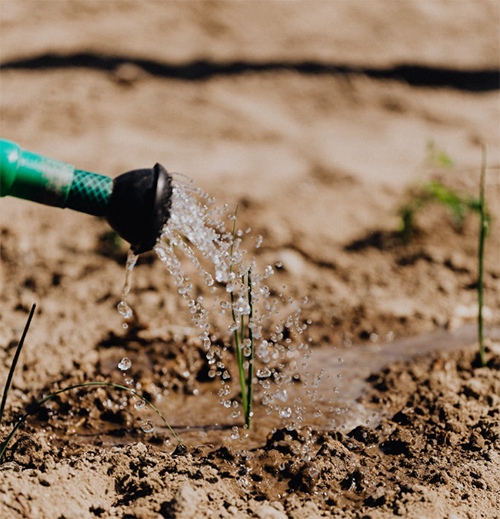A dirty filter can reduce water flow and increase pressure, leading to inefficient irrigation.
Irrigation is an essential part of agriculture, landscaping, and gardening. Proper irrigation ensures that plants and crops receive an adequate water supply, which is essential for their growth and survival. However, several factors can impact irrigation efficiencies, such as water flow, pressure, and filtration. A dirty filter can be one of the significant culprits, reducing water flow and increasing pressure, leading to inefficient irrigation. In this article, we will discuss in-depth how a dirty filter can impact irrigation efficiency, its causes, and possible solutions.
Understanding Water Flow and Pressure in Irrigation
Water flow and pressure are two of the most critical factors in irrigation. Water flow refers to the amount of water that passes through a system per unit of time, typically measured in gallons per minute (GPM) or liters per minute (LPM). In contrast, pressure refers to the force that drives water through the system, usually measured in pounds per square inch (PSI) or bars.
Water flow and pressure are interdependent factors that affect irrigation efficiency. For instance, if the water flow is too low, plants may not receive adequate water, leading to stunted growth or even death. Conversely, if the water pressure is too high, it can damage the plants, soil structure, or irrigation system components, leading to inefficient irrigation.
How a Dirty Filter Can Reduce Water Flow and Increase Pressure
A filter is an essential component in an irrigation system that removes debris, sediment, and other contaminants from the water. A clean filter allows water to flow freely through the system, while a dirty filter can impede water flow and increase pressure. Here are some of the ways a dirty filter can impact irrigation efficiency:
- Reduced Water Flow
A dirty filter can reduce water flow by clogging the filter element, which reduces the surface area available for water to pass through. As a result, water flow decreases, leading to an inadequate water supply to plants and crops. Moreover, reduced water flow can increase the time it takes to irrigate a particular area, leading to inefficiencies in water use.
- Increased Pressure
As water flow decreases due to a dirty filter, pressure builds up behind the filter element. The pressure increases until it reaches the point where it can overcome the resistance of the filter element and force water through. The higher pressure can damage the irrigation systems components, such as pipes, fittings, and valves, leading to leaks, bursts, or other malfunctions. Additionally, the increased pressure can create misting, which can damage the plant’s leaves and stems, leading to reduced growth or death.
- Higher Energy Consumption
A dirty filter can also increase energy consumption in the irrigation system. As the water flow decreases, the irrigation system’s pump has to work harder to maintain the desired pressure. This can lead to increased energy consumption, higher utility bills, and increased greenhouse gas emissions.
Causes of Dirty Filters in Irrigation Systems
Several factors can contribute to dirty filters in irrigation systems, such as:
- Water Source Quality
The quality of the water source can affect the filter’s cleanliness in an irrigation system. If the water source contains high levels of sediment, debris, or other contaminants, the filter will clog faster, reducing water flow and increasing pressure.
- System Design
The design of the irrigation system can also impact the filter’s cleanliness. For instance, if the filter is too small for the water flow rate, it will clog faster, reducing water flow and increasing pressure.
- Maintenance
Proper maintenance is crucial in keeping irrigation system filters clean. If filters are not cleaned or replaced regularly, they can become clogged, reducing water flow and increasing pressure.
Solutions to Dirty Filters in Irrigation Systems
Several solutions can address dirty filters in irrigation systems, such as:
- Regular Maintenance
Proper maintenance is crucial in keeping filters clean and functioning correctly. Irrigation system filters should be inspected regularly and cleaned or replaced as needed. The frequency of maintenance will depend on the water quality, system design, and filter type. For instance, a screen filter may require more frequent cleaning than a sand filter.
- Water Treatment
Water treatment can be an effective solution to prevent sediment and debris from entering the irrigation system. Water treatment can involve the use of chemicals, such as flocculants or coagulants, which can cause sediment and debris to clump together, making them easier to remove.
- Upgrading the Filter
Upgrading the filter to a larger size or a different type can also improve irrigation efficiency. For instance, a sand filter may be more effective in removing sediment than a screen filter. Additionally, upgrading to a larger filter can reduce the frequency of maintenance and improve water flow.
- Adjusting Water Flow and Pressure
Adjusting the water flow and pressure can also help prevent dirty filters in irrigation systems. For instance, reducing the water flow rate can decrease the likelihood of clogging the filter, while reducing the water pressure can prevent damage to the irrigation system components.
In conclusion, a dirty filter can reduce water flow and increase pressure, leading to inefficient irrigation. It is crucial to maintain the irrigation system filters properly to prevent clogging and ensure adequate water supply to plants and crops. Regular maintenance, water treatment, upgrading the filter, and adjusting water flow and pressure are some of the solutions that can help improve irrigation efficiency. By understanding the impact of a dirty filter on irrigation efficiency, we can take steps to optimize our irrigation systems and promote sustainable agriculture, landscaping, and gardening practices.


